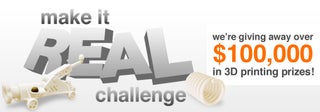Introduction: Using 3d Scanning, Modelling and Printing to Accurately Recreate an Ancient Roman Plate
This is a project I've been working on recently in which we ultimately plan to recreate an ancient roman plate to accurate scale.
The project started as an attempt to verify wether or not a fragment of a roman plate came from a dish larger than any found before. We are still awaiting confirmation of this (it's an ongoing project) but this instructable documents what we've done so far and what we plan to do next...
Step 1: Scanning the Fragment
Our first job was to get an accurate digital copy of the fragment from which we could measure the diameter.
To do this we used a Faro arm laser scanner to digitise a model of the fragment accurate to 35 microns (not much more than the thickness of a human hair!)
The first image shows a close up in which you can see the point cloud. Each green dot is an accurately measured point on the fragment. Zooming out in the other 2 pictures you can see how many there are.
This point cloud then has a mesh wrapped over it, Creating a polygon model of the fragment which we can accurately measure.
Step 2: Finding the Diameter
I extended the curved lines on the fragment into circles, once I was happy that all these circles shared the same centre I could use them to find the exact diameter of the plate. Roughly 700mm.
This is as far as the project has gone so far. The following steps are what's still to do. I'll update with pictures of the real process as we go through the steps ourselves..
Step 3: Recreating the Plate
With the diameter found the fragment can then be repeated again and again until ther full circle is formed.
I can then take this new polygon model and use it as a basis for rebuilding a full plate to the accurate dimensions of the original.
Step 4: Adding Detail
This recreated plate can then have detail 'carved' into it using a digital sculpting program.
For the final project we intend to use a pattern developed by an expert on Roman art using the original fragment as a basis for their designs.
For this rough example I've just used an image of a roman plate found on google as a stencil. With the stencil in place we can add depth to the model within its confines, leading to sharply defined detail on the mesh surface. Recreating the pattern on the newly modelled plate.
Step 5: The Finished Article

Participated in the
ShopBot Challenge

Participated in the
Make It Real Challenge












